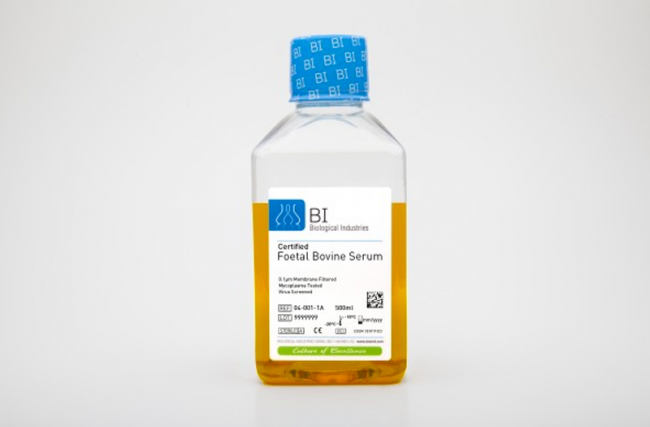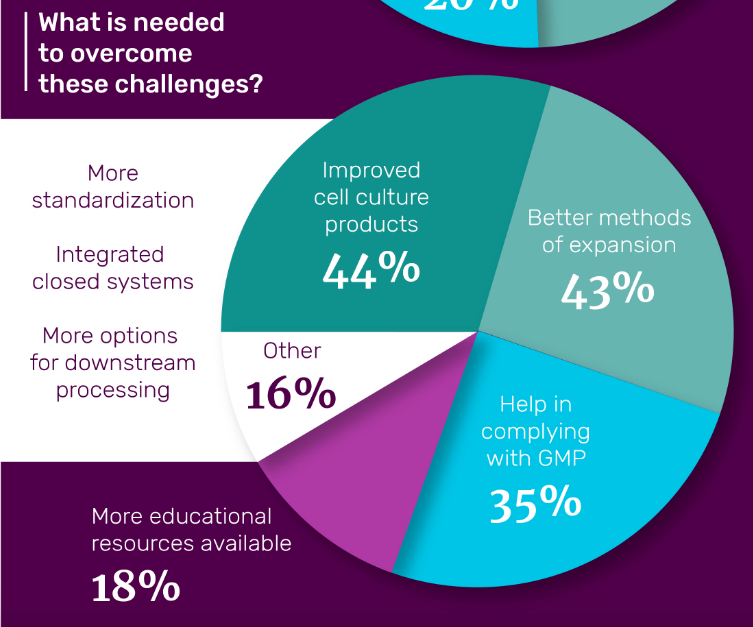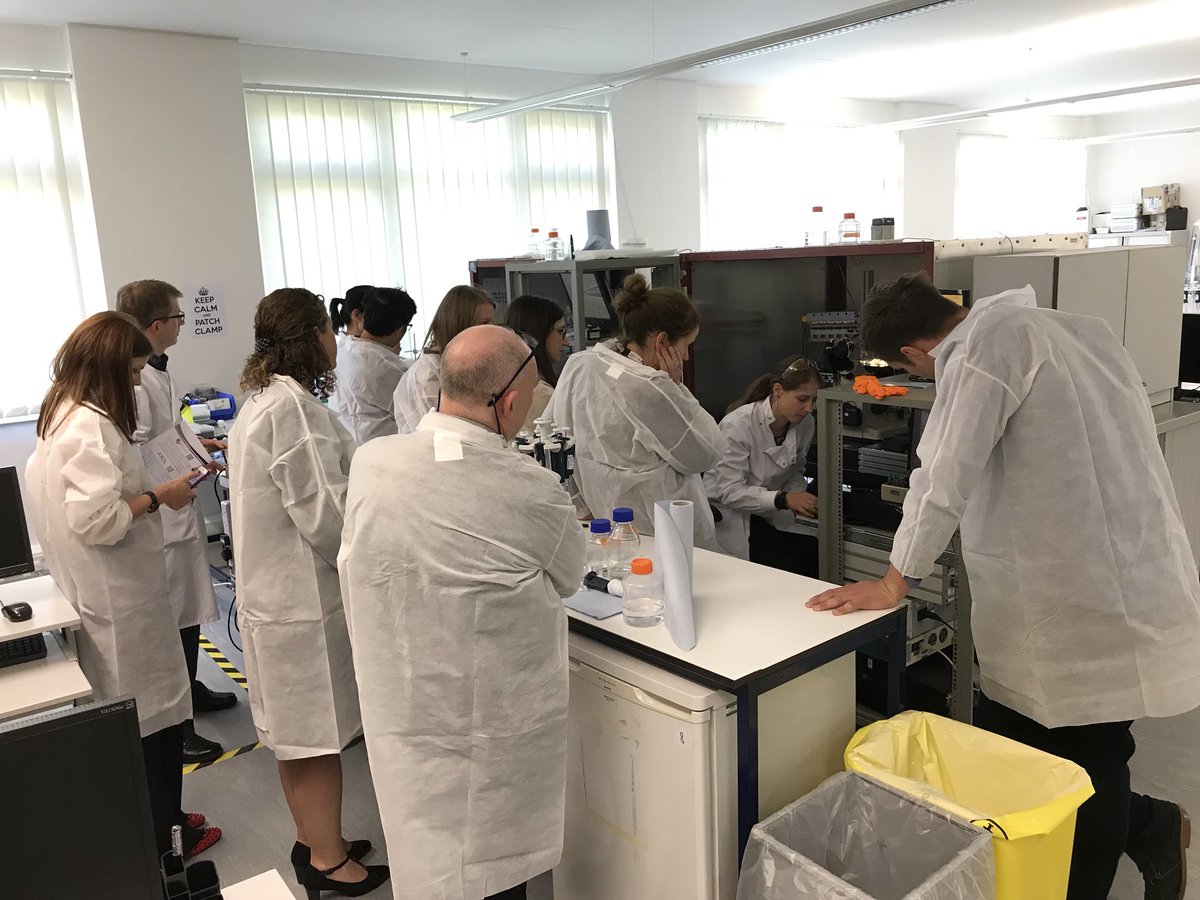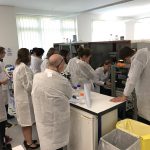Fetal Bovine Serum for your cell culture applications
Serum is commonly used as a supplement to basal growth medium in cell culture. The most common type of serum used for cell growth is fetal bovine serum (FBS), also known as fetal calf serum (FCS). FBS remains and important and major component of cell culture research here in the UK.
Fetal bovine serum is obtained from fetuses harvested in abattoirs from healthy dams fit for human consumption.
In cell culture, serum provides a wide variety of macromolecular proteins, low molecular weight nutrients, carrier proteins for water – insoluble components, and other compounds necessary for in vitro growth of cells, such as hormones and attachment factors. Serum also adds buffering capacity to the medium and binds or neutralises toxic components.
The selection of a serum supplement for cell culture applications is primarily dependent on the chemical definition of the basal medium, the type of cell to be grown, and the culture system being employed. For instance, we have Certified Fetal Bovine Serum Qualified for Human Mesenchymal Stem Cells in addition to Standard Certified FBS, which can be used on a broad range of cells.
Two distinct grades of FBS are available on the world market: USDA-Grade FBS and European-Grade FBS. USDA-Grade FBS is produced from raw materials originating only from countries certified to be free of both BSE (Bovine Spongiform Encephalopathy) and FMD (Foot and Mouth Disease). This product can be freely imported into any country, and is the product of choice in all countries for manufacturing purposes.
Furthermore, only the use of this product allows researchers to send their cells, or the products of their cells, to collaborators in other countries with strict import regulations. All FBS processed in the Biological Industries plant is USDA-Grade.
Biological Industries’ products are manufactured in compliance with the quality management standard ISO 9001:2008 and ISO 13485:2003.
Certifications are available upon request.
Since serum, as a biological material, represents an undefined mixture of components in which composition varies from one lot to the other. Some cell types are sensitive to the variations in serum performance. We encourage our customers and provide them with the opportunity to evaluate serum samples with their own culture system and cells while we reserve the quantities of the specific lots until customer testing is completed. In this way, you may choose the best serum for your own applications.
Please feel free to contact us with any specific questions or requirements of a potential order of any of our FBS products.







